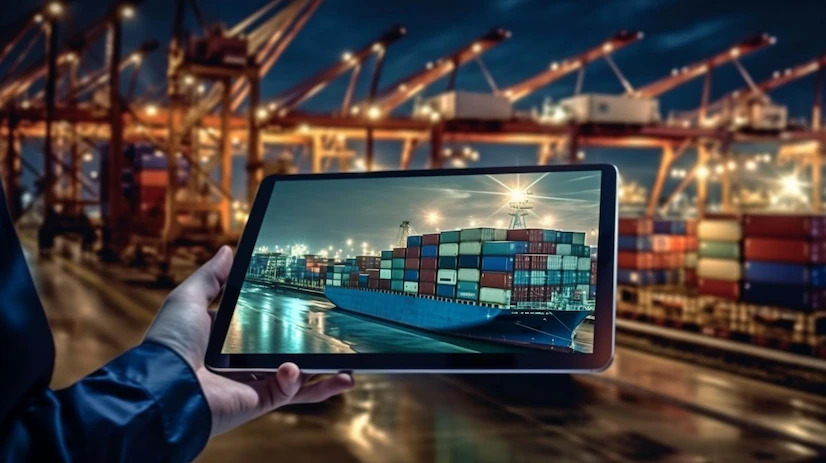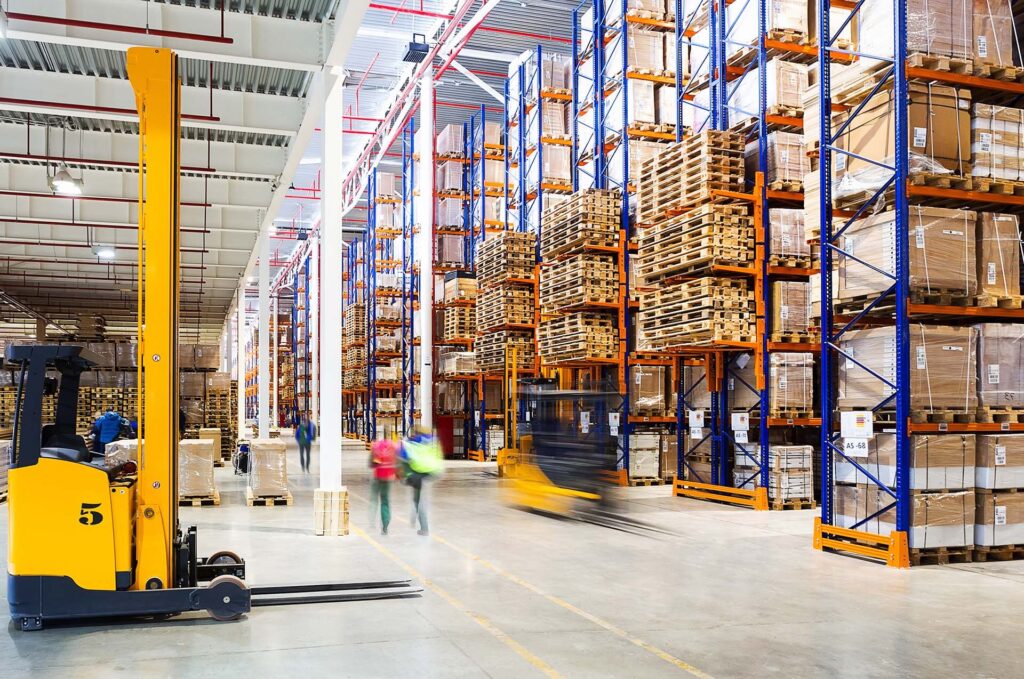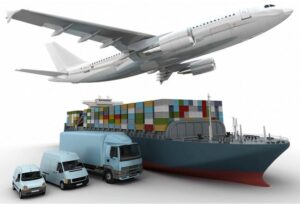Container shipping remains the dominant force in global trade, and the China-Europe route is one of the busiest in the world. Whether you’re a seasoned importer or a new entrepreneur venturing into international commerce, navigating the intricacies of container shipping from China to Europe can seem daunting. But fear not! This comprehensive guide equips you with the knowledge and strategies to ensure a smooth and successful shipping experience.
Advantages of Container Shipping

- Cost-effective: Containerization offers economies of scale, making it a highly cost-efficient method for transporting large volumes of cargo.
- Standardized Sizes: Standardized container dimensions ensure seamless intermodal transportation, allowing your cargo to effortlessly transition between trucks, ships, and trains.
- Security and Protection: Sturdy containers safeguard your goods from harsh weather conditions, potential handling damage, and pilferage during transportation.
- Versatility: Containers come in various sizes and types to accommodate a wide range of cargo, from dry goods and machinery to temperature-controlled perishables.
- Simplified Documentation: Containerized shipments often require less complex documentation compared to loose cargo, streamlining the customs clearance process.
Key Considerations for Container Shipping
Incoterms (International Commercial Terms): Clearly define the responsibilities of both buyer and seller regarding costs, risks, and transportation arrangements using Incoterms (e.g., FOB – Free On Board, CIF – Cost, Insurance, and Freight).
Cargo Readiness: Ensure your goods are properly packaged, labeled, and secured within the container to prevent damage during transit. Consider fumigation requirements for wooden packaging materials to comply with European regulations.
Customs Regulations: Familiarize yourself with the customs regulations of both China and the European destination country. Prepare necessary documentation like commercial invoices, packing lists, certificates of origin, and any required permits.
Port Congestion: Be mindful of potential port congestion, especially during peak seasons. Factor this in when planning your shipping schedule to avoid delays.
Insurance: Consider cargo insurance to protect your investment from potential risks like loss, damage, or theft during transportation.
Choosing the Right Container Size and Type

The optimal container size and type depend on the volume, weight, and specific characteristics of your cargo. Here’s a breakdown of commonly used container types:
- Dry Cargo Containers (DC): General-purpose containers ideal for dry, non-perishable goods. Available in various lengths (20ft, 40ft) and come in standard and high-cube variations for increased capacity.
- Reefer Containers (RF): Refrigerated containers equipped with temperature control systems for transporting perishable goods like food and pharmaceuticals.
- Open Top Containers (OT): Containers with a removable roof, facilitating the loading and unloading of oversized cargo that cannot fit through standard container doors.
- Flat Rack Containers (FR): Containers with collapsible sides, suitable for extremely oversized or odd-shaped cargo that extends beyond the container’s footprint.
- Tank Containers (TK): Specialized containers designed for transporting liquids, gases, or bulk powders.
Understanding Container Shipping Costs
Container shipping costs encompass various elements:
- Ocean Freight: The core cost, determined by factors like shipment origin and destination, container size and type, and chosen shipping line.
- Inland Transportation: Costs associated with moving the container between your warehouse or factory and the port of origin/destination. This may involve trucking or rail transportation.
- Terminal Handling Charges (THC): Fees levied by the terminal operators for loading, unloading, and handling containers within the port facilities.
- Customs Clearance Fees: Charges associated with processing your shipment through customs at both origin and destination ports.
- Documentation Fees: Costs incurred for preparing and processing necessary shipping documents.
- Surcharges: Additional fees imposed by shipping lines for factors like fuel price fluctuations, peak season surcharges, or security charges.
Obtaining an accurate quote from multiple reputable shipping companies is crucial to ensure you get the best value for your money.
Container Shipping Routes and Transit Times

The primary routes for container shipping from China to Europe include:
- North Europe Route: Connects major Chinese ports like Shanghai and Ningbo to ports in Northern Europe such as Rotterdam, Hamburg, and Antwerp. This route offers the fastest transit times, typically ranging from 28 to 35 days.
- Mediterranean Route: Links Chinese ports with ports in the Mediterranean Sea, including Barcelona, Genoa, and Piraeus. This route offers slightly longer transit times compared to the North Europe route, averaging around 35 to 42 days.
- Black Sea Route: A less congested route connecting Chinese ports with Black Sea destinations like Istanbul and Novorossiysk. Transit times are generally longer, ranging from 40 to 45 days.
Documentation and Customs Requirements for Container Shipping
Ensuring you have the proper documentation in place is vital for a smooth customs clearance process and avoiding costly delays. Here’s a breakdown of key documents required for container shipping from China to Europe:
- Commercial Invoice: A detailed document outlining the product description, quantity, unit price, total value, and currency of your shipment.
- Packing List: An itemized list specifying the contents of your container, including individual product descriptions, quantities, and packaging details (boxes, cartons, etc.).
- Bill of Lading (BOL): A legal document issued by the shipping line acknowledging receipt of your cargo for transportation. It serves as a contract of carriage and a document of title.
- Certificate of Origin: A document issued by a government agency or chamber of commerce certifying the country of origin of your goods. This may be required for preferential duty treatment under trade agreements.
- Export Declaration: A government-required document outlining details of your shipment for export control purposes.
- Import Declaration: A document filed with European customs authorities declaring the arrival of your goods.
- Additional Permits or Certificates: Depending on the nature of your cargo, specific permits or certificates may be required. These could include phytosanitary certificates for agricultural products, health certificates for food items, or safety data sheets for hazardous materials.
It’s highly recommended to consult with a freight forwarder or customs broker to ensure you have all the necessary documentation and comply with relevant regulations.
Finding a Reliable Container Shipping Company

Choosing the right shipping partner is critical for a successful container shipping experience. Here are key factors to consider when selecting a container shipping company:
- Reputation and Experience: Opt for a reputable carrier with a proven track record of reliable service and expertise in the China-Europe trade lane.
- Service Offerings: Evaluate the range of services offered by the shipping company, including door-to-door delivery, customs clearance assistance, cargo insurance options, and real-time shipment tracking.
- Competitive Rates: Obtain quotes from multiple companies to compare pricing structures and identify the most cost-effective option. Consider factors beyond just the base ocean freight rate, including inland transportation costs, terminal handling charges, and potential surcharges.
- Communication and Customer Service: Choose a company that prioritizes clear communication and responsive customer service, ensuring you’re kept informed throughout the shipping process.
Building a strong relationship with a reliable shipping partner can streamline your container shipping operations and provide valuable support for your import/export business.
Tips for Efficient and Secure Container Shipping
- Proper Cargo Packing: Ensure your goods are securely packed using high-quality materials to withstand the rigors of ocean transport. Utilize dunnage (packing materials) to prevent shifting and potential damage during transit.
- Weight Distribution: Distribute the weight of your cargo evenly within the container to maintain stability and prevent damage to the container structure.
- Container Sealing: Properly seal your container with a high-security seal to deter tampering and ensure the integrity of your shipment.
- Real-Time Tracking: Leverage real-time tracking systems offered by shipping lines to monitor your container’s location and estimated arrival time throughout the journey.
- Insurance Coverage: Consider obtaining cargo insurance to protect your investment against potential risks like loss, damage, or theft during transportation.
By following these best practices and leveraging the valuable insights provided in this guide, you can navigate the complexities of container shipping from China to Europe with confidence and efficiency. Remember, meticulous planning, thorough documentation, and a reliable shipping partner are the cornerstones of a successful container shipping experience.





